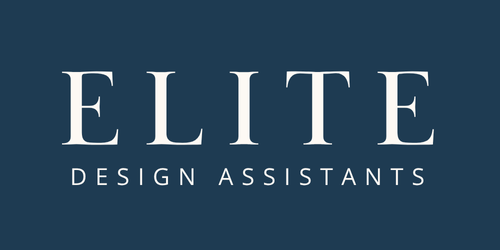When (and How) to Invest in Your Interior Business: Smart Spending That Pays Off
/You’ve heard the advice a hundred times: hire help, get organized, build your brand. But what does that actually look like in the day-to-day reality of running an interior design firm, juggling sourcing delays, client indecision, inbox overload, and desperately trying to preserve time for creativity?
The truth is: most investment advice out there is too broad to be useful for designers deep in the weeds. So instead of vague suggestions, let’s talk about clear, practical, and often-overlooked ways to invest in your business—moves that pay off in real ways: better margins, more ideal clients, smoother projects, and a business that supports your life (not the other way around).
Before You Spend a Dime, Do This First
You already know the big questions: Will this save me time? Will this increase revenue? Will it support my growth? They still matter—but before you jump into spending, try these three steps:
Pinpoint your bottlenecks. Where exactly are projects slowing down or creating stress? For many designers, the real friction is in client approvals, vendor follow-ups, or scattered communication, not the obvious stuff.
Track your “task regret.” What were 3–5 things you did last week that made you think, “I shouldn’t be the one doing this”? That’s your cue for where to offload or automate next.
Audit your emotional ROI. If a task drains your energy, disorganizes your week, or leaves you frustrated—no matter how low-cost it seems—it's probably more expensive than you think.
Fresh, High-Impact Ways to Invest in Your Design Business
1. Professional Procurement Support (Even Just 5 Hours/Week)
This isn’t just about saving time—it’s about protecting your reputation. When orders go sideways or details slip through the cracks, it reflects on your professionalism, not the vendor's.
Hiring a procurement assistant—even on a very part-time basis—can radically reduce errors, improve client satisfaction, and free up your mental bandwidth. A good one will do more than place orders—they’ll track deliveries, resolve issues, and keep your timelines intact.
Bonus: You don’t have to wait until you’re “big enough” to hire help here. Even 5 focused hours a week can make a noticeable difference.
2. Workflow Mapping (Before You Buy Another Software Subscription Promising Organization)
Too many designers invest in tools they never fully use. Before you spend money on project management software, invest time in actually mapping out your internal and client workflows:
What happens at every touchpoint?
Where are the delays or confusion?
What steps repeat unnecessarily?
Even a simple sticky note exercise on a whiteboard can bring massive clarity. Once your process is visible, any tech you do invest in will support your actual workflow, not complicate it.
3. Customized Client Education Assets
If you’re constantly repeating the same explanations—why approvals matter, what happens when delays hit, how trades are scheduled—it’s time to create assets that speak for you:
Short videos explaining key parts of your process
Visual timelines or “what to expect” guides
Scenario-based FAQs (e.g., “What if I change my mind mid-project?”)
These tools build trust, reduce friction, and prevent misunderstandings. Bonus: they make your process feel polished and premium, while reducing your inbox overload.
4. A Retainer-Based Bookkeeper or Fractional CFO
Most designers only look at their financials at tax time, which is far too late. A design-savvy bookkeeper or part-time CFO can help you understand where you’re profitable, which services have the strongest margins, and when it’s time to raise your rates.
Look for someone who understands interior design businesses, not just someone who balances books. The goal? Making proactive financial decisions, not just filing receipts.
5. A Front-End Client Intake System That Filters Before You Reply
Tired of spending time on leads that aren’t the right fit? Create a system that qualifies potential clients before they even get to your inbox:
Custom inquiry forms with logic-based filters
Automated responses that explain your process and link to a scheduler
A “working together” video that sets expectations
This simple shift reduces wasted time, establishes authority, and positions you as a premium, process-driven firm from day one.
Investments That Seem Smart... But Often Aren’t (Yet)
Some common “investments” don’t yield strong results unless your foundations are already in place:
Running ads without a strategy. If your messaging, pricing, or packages aren’t clear, paid traffic won’t convert, and you'll burn your budget fast.
A new website without a clear offer. Beautiful design won’t book clients if the copy is vague or your services are confusing.
Hiring before systemizing. Adding a full-time team member to chaos only increases the overwhelm. Get your processes in place first, then bring in support.
Final Thought: You’re Not Spending—You’re Designing a Business
The most successful interior designers don’t just create beautiful spaces—they design intentional, profitable businesses that run smoothly behind the scenes.
Every investment doesn’t have to be massive. But it should be strategic. So next time you're feeling overbooked, overwhelmed, or underpaid, ask yourself:
“What’s one part of my business I could improve with the right investment—whether that’s time, support, or better systems?”
Then act on it. That’s how you build a business that supports your creativity—instead of consuming it.
xx, Danae
Need help figuring out where to invest next?
At Elite Design Assistants, we specialize in helping design firms scale without the stress. Whether you need workflow support, procurement help, CFO and admin assistance, or automation solutions, we’re here to help you build a business that runs beautifully behind the scenes.









